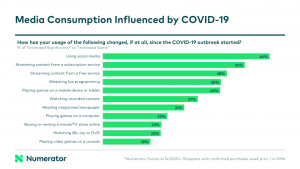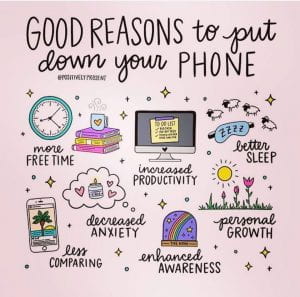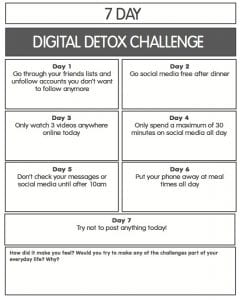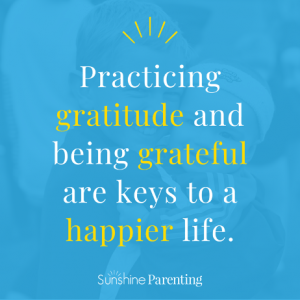When I first left my home country to come to the United States I was not sure what exactly to expect. I was about to start a new chapter in my life. I was both nervous and excited, a feeling that somehow reminded me of Jonas in Lois Lowry’s The Giver, but I wasn’t afraid. Home, the Commonwealth of Dominica, was only a plane ride away, I had nothing to fear and was enjoying the opportunity given to me. I was so happy when I started university at DePaul, I finally had an idea of the direction of my life, what I wanted to do, granted I had to keep editing bits and pieces here and there. I was content. This isn’t to say that it was without ups and downs, even though I was happy in Chicago, I still missed home.
mindfulness
Social Media Cleanse During COVID-19
Hello everybody! Let’s talk COVID-19 x Social Media. Here I will be discussing social media usage during COVID-19 and what I noticed when I cut down on my social media usage for a few days. As COVID-19 continues, it has become obvious that a lot of us are spending more time on our phones and laptops (even TVs) than we used to before. Some of us are perfectly fine with this, and it is working well as a means of keeping in touch and up to date, and others are frustrated with how much time is currently spent on the screen. I fall into the latter category. Because some of my screen time (like work and school initiatives) is non-variable, I decided to change the one aspect of it that is variable for me: my usage for personal purposes, a lot of which involves social media. Keep reading for my personal tips around why cutting down on usage can be helpful as well as how you might go about approaching this!
(Keep in mind, this is not for everybody right now – many of us are far away from loved ones and find social media to be a great tool in helping keep us connected. Many of us tend to use social media as a news source. And for some of us, social media usage and technology usage is simply a means of coping right now – and that is perfectly okay if it’s working for you. If this is the case for you, maybe sometime in the future would be more feasible for a cleanse like this. Or maybe you do a half cleanse now… still use certain platforms but not others, or just use platforms less than you usually would. OR maybe now is the perfect time for a cleanse because you’re sick of all of the screen time. Do what is best for you personally! The following are some ideas that worked for me.)
If you are currently a student like me, not only are you now taking four (or more) online classes, you might also be doing remote work for a job as well. For me, the combination of four different online classes, a remote job in which I engage in 5/7 days of the week, the online search for a job for after graduation, and any personal technology usage outside of these things really adds up! It feels as though my whole life could be lived on the screen right now if I let it get to that place. Which is why I wanted to write this post… and why I took a cleanse from social media for a few days.
For my cleanse, I decided to remove Instagram, Twitter, Facebook, Snapchat, and TikTok (we all know how encaptivating this one is nowadays) from my phone. For me, it had to be all of these apps, as I wanted to do a full cleanse, and these are the social media apps that I gravitate towards the most on a daily (sometimes even hourly – oops) basis. Initially, I kept the apps fully deleted, but one day in I decided to redownload them, simply turn off all notifications and badges for each of them, and keep them in a folder on the last ‘page’ of my phone where I wouldn’t be as tempted to click on them. The only reason I redownloaded the apps was so that I could check in once or twice a day to stay connected, but still remain mostly off of these apps. I made this decision because I realized that right now – during COVID – it is extremely hard to be completely disconnected from social media as a lot of our interaction with loved ones occurs over social media at this moment in time. Basically, I noticed that I did not want to be completely disconnected from this outlet, as there are many positive aspects to it as well, so I adjusted my cleanse. A big tip of mine: Feel free to adjust at any time if you need to! This is all about what serves YOU best.
Being flexible in this way is important, in my mind, as it leaves more room for ‘process improvement,’ so to speak. I am also a big proponent of the idea of balance in life, so having no access at all to the apps felt a bit extreme to me. Keeping my apps on my phone – just more tucked away – also allowed me to practice having self-control, as I still had access and was forced to make the conscious decision to avoid engaging. Knowing the apps were there in the back of my phone was tempting at some points in time, but I knew I needed to hold out and stay true to my commitment to take a break because of all of the positive aspects that were coming with it. And each time I chose to live in the moment versus go on my social media apps, I felt accomplished.
Let’s now talk about what I noticed by doing this cleanse. And afterwards I’ll provide some tips for those who are interested in trying this as well. Remember, this is not an exhaustive list – there are so many benefits to decreasing screen time/time on social media, and they show differently for everyone.
- One of the first things that I noticed was an overall increase in wellbeing. By this I mean that I simply just felt better – overall! There could be many reasons as to why this was the case, but I think the things that I am about to mention next were a big part of it.
- One of these things was that I noticed I felt (and probably was) a lot more in the moment. I really felt present! I felt engaged in life and in interactions with others and myself. I’d go as far as to say that going off of my social media actually increased the mindfulness that I had moving through my days. And we know that there are so many different benefits to mindfulness! The biggest benefit that I see in mindfulness is that you are literally taking back time that is otherwise lost to being the opposite of mindful about life. When you are mindful, you are fully living in every moment and taking it all in completely.
- Another interesting thing that I noticed was that I started choosing to partake in activities that I might not have otherwise gravitated towards as much before taking a break from social media. I actually felt myself getting more creative in my pursuit of entertainment/stimulation. For instance, I started playing more board games and card games with my family. And I started using the app Duolingo to re-teach myself Spanish. It wasn’t that I wasn’t interested in doing these types of activities before, but it was just so easy to hop on my phone (social media) that I often times wouldn’t even consider trying something else. In this way, I believe that the cleanse actually helped me to expand my mind in a way and increase my creativity as it relates to choosing new and fun activities to engage in. Now, even though I am not on a hiatus from social media anymore, I still choose to participate in these activities that I picked up during my break, and I’m so happy that I have this newfound appreciation for them.
- Another interesting thing that I noticed had to do with the amount of time I felt I had in a day. Time is something that many of us seem to have a bit of a love/hate relationship with. Many of us feel that in this fast-paced day and age we live in we never have enough time to truly live! I think that often times we genuinely believe we have zero free time in any given day – and for some of us with super busy schedules this might be true at times – but think about the number that is your screen time (this number can usually be found in the settings app of a smartphone) and how much time this takes out of a 24-hour day. Say your screen time each day is 4 hours (out of 24). That is 1/6th of your day lost to staring at a screen versus participating in life outside of the screen. Imagine if you even just cut that number in half and had an extra hour or two to do what you wanted with each day – that’d be so much more time to actually live!
Are you looking to do a cleanse yourself but simply don’t know where to get started? Here are some tips that I found to be helpful in staying true to the commitment to a cleanse:
- One thing that I found helpful – this I mentioned earlier too – was to put the social media apps in a folder on the last ‘page’ of my phone so that they weren’t as easily accessible; they were ‘out of sight out of mind’ so to speak.
- Turning off notifications and badges was also so helpful! I cannot emphasize this enough. This made all the difference for me. In the past, it was so easy to feel tempted to go on social media anytime and all the time because there were constantly notifications reminding me that something new was happening. Those little red badges would constantly tell me that I had a new message on Instagram or picture to see on Snapchat. By turning off my notifications and badges I was able to cut down on my usage a lot as I didn’t see everything constantly popping up on my lock screen and, subsequently, wasn’t always automatically checking it – it became a conscious decision to go on an app, and I got to see any updates when I made this decision. I realized that a lot of these updates were not nearly as ‘time sensitive’ as I had labeled them as before and that a lot of them could wait until the end of the day.
- A caveat here: I think that often times our social media usage can become quite “autopiloted” versus conscious, and so one easy way to cut down on social media usage is to simply become more aware of our usage – this means both being aware of when you are and aren’t going on as well as being aware of whether or not you’re doing so consciously. For some, keeping a journal might even be of value! You could simply log whenever you are going on, for how long, why you decided to go on, and what you were doing in order to become more mindful of your usage (if anything).
- If you feel comfortable doing so, making an announcement online to others that you will be cutting off/down your usage can be really helpful – this serves as an accountability check. This could be as simple as making an Instagram story (or any other equivalent) that says something along the lines of, “Taking a break from social media for a few days [or weeks if you choose] – if you need to contact me, shoot me a text instead.” Putting out a message like this can also save you from the stressful thought that perhaps others will think you’re ignoring them, or the stress that you might miss an important message from a loved one. (You can also just reach out to the individuals who would be most likely to contact you and just let them know to reach out via a phone call or text message instead.)
- Making an announcement to friends and family that you tend to see on a regular basis can also be quite helpful (& is something you could do instead of making one online if you don’t feel as comfortable doing that) – these people can help check you if they see you spending a lot of time on your phone!
Well, that is all I have for now. I hope that at least one of these tips and tricks rings true with you! If now is a time that you would like to do a cleanse as well – just remember, we all have different needs… do what’s right for you and adjust when needed! Balance in life is important.
xoxo,
Lauren at HPW
Wellness Wednesday- Mindfulness & Gratitude
What are you grateful for today?
Hey pals, welcome back for another edition of HPW’s Wellness Wednesday series. Today’s theme is mindfulness and gratitude.
Photo provided by Mindful.org
Mindfulness consists of gaining self-awareness and acceptance towards one’s thoughts, feelings, and emotions without judgment. Below are some mindfulness activities that we encourage you to try!
- Meditation
Meditation embraces the present moments by training your body and mind to be relaxed. Find a comfortable place to sit, close your eyes, and focus on your breath. Check out The Division of Mission and Ministry’s latest guided Midday Meditation.
This practice is at best after you wake up in the morning, before starting your work and/or school day and before you check your phone. The first step is to sit up in your bed or sit on a chair with your back straight and close your eyes. Take three long, deep breaths. Then ask yourself “What is my intention for today?” or use these prompts to guide you:
How might I show up today to have the best impact?
What quality of mind do I want to strengthen and develop?
What do I need to take better care of myself?
During difficult moments, how might I be more compassionate to others and myself?
How might I feel more connected and fulfilled?
The next step is to set your intention for the day, make it plan, and write it down.
“Today, I will focus on being kind to and myself”
“Today, I will focus on completing as much as I can until 5:00 PM”
Then throughout your day, check-in with yourself by re0visitng your intention statement.
- Five Senses Activity The goal of this exercise is to keep yourself grounded in the present moment by noticing your surroundings.
What are 5 things that you can see?
What are 4 things that you can feel?
What are 3 things you can hear?
What are 2 things you can smell?
What is 1 thing that you can taste?
- Mindful Breathing for One Minute.
For one minute, focus on your breathing. Breathe in through your nostrils and out through your mouth. Place your hand on your stomach and notice how your hand gently rises and falls with your breath.
S: Stand up. Stand up, close your eyes, and breathe slowly and deeply.
T: Tune in to your body. Notice your bodily sensations, feelings, thoughts, and emotions. Breathe in positivity and breathe out negativity.
O: Observe. Open your eyes, observe your surroundings. Lift your eyes and take in your surroundings. Be grateful for your surroundings and embrace the beauty of it.
P: Possibility. Ask yourself what is possible? What is new? What is your next forward step?
For more mindfulness activities, click here.
The Science of Mindfulness
Research studies show that mindfulness decreases anxiety, reduction in perceived stress, decrease depressive symptoms, and improves on emotional and mental well-being. There is an online program that is called Mindfulness-based stress reduction (MBSR). It is an eight-week evidence-based program that offers mindfulness training to help individuals with their stress, anxiety, depression, and pain.
When engaging in this mindfulness training, MBSR studies show that the left frontal activity of the brain is enhanced which means that the brain is developing resilience. Studies also show that there also an improvement in our immune system when we engage in mindfulness activities. So, our bodies’ ability to fight infection starts to improve when we engage in mindfulness. MBSR studies also show that having mindfulness activities as a part of a treatment plan for individuals who have mental health illnesses, such as drug addiction, obsessive-compulsive disorder, borderline personality disorder helps prevent relapse from depression.
Expressing gratitude is another mindfulness activity. Expressing gratitude is showing thankfulness and appreciation to someone, including yourself.
Here are some ways to practice gratitude:
- Praising the Small Victories.
There is success in the small victories too so let us celebrate them. Remember that progress matters, not perfection. You are still winning, even if it is a small win. Claim your victory.
- Keep a Gratitude Journal
Photo provided by positivepsychology.com
Daily, write down the things that you are thankful/grateful for. Start writing down “I am thankful for…”. Once you start, it is hard to stop. After you start writing a list then you will recognize the many blessings that you have received.
- Writing an Appreciation or a Love Letter to You and/or a Loved One
Sometimes we emotionally and mentally beat ourselves up to more than we show appreciation to ourselves. Today, we encourage you to give yourself some grace by writing an appreciation or a love letter to yourself. We also sometimes forget to show appreciation and love to our family and friends, so we encourage you to take some time to write a love/appreciation letter to them.
- Verbally Telling your Loved One What You Appreciate Them For
Tell your friend and/or family friend how much you appreciate them and remind them that you appreciate them.
For more gratitude activities, click here.
The Science of Gratitude
Research studies show that expressing gratitude increases one’s happiness, energy, self-esteem, and strengthens resiliency. Studies also show it decreases chronic pain levels and reduces blood pressure levels. Showing gratitude starts the production of dopamine and serotonin which are our “feel-good neurotransmitters”. Gratitude also stimulates the hypothalamus and the ventral tegmental area. The hypothalamus’ role is to keep the body in homeostasis, which means to make sure everything is balanced. So, this part of the brain regulates stress and the ventral tegmental area is involved in developing and expressing feelings and emotions such as feelings of pleasure.
Also, the more you practice gratitude, the more you train your prefrontal cortex to retain positive thoughts, emotions, and experiences and kick out the negativity.
Remember, mindfulness & gratitude are not about invalidating difficult emotions—it’s about acceptance.
Click here for the recorded Wellness Wednesday Zoom session.









